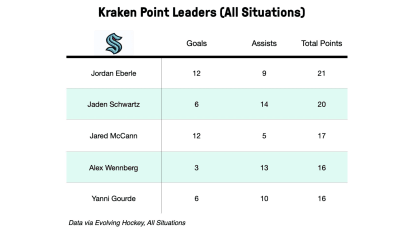The memory is still clear as day for me. Years ago, a group of us were looking at an NHL player's career stats. On paper, each year was represented by one line with traditional numbers reading left to right: goals, assists, total points.
Each line presented a very different number than the one before or after it and thus the question quickly emerged: "What or who is this player? Is he the player who scored 30 goals or the player who did not?"
What bothered me as I looked at these totals in stark contrast to one another is they didn't account for (among other things) the fact the player had missed a large chunk of games in one season due to injury. You can't hold it against someone for not scoring if they aren't even on the ice, right?
It felt like there had to be a better way to determine player evaluation, and thus my journey into using "rate stats" began.
Let's dig in.
Per-60-Minute Men
When it comes to evaluating performance, rate stats give us a way to level the playing field




























